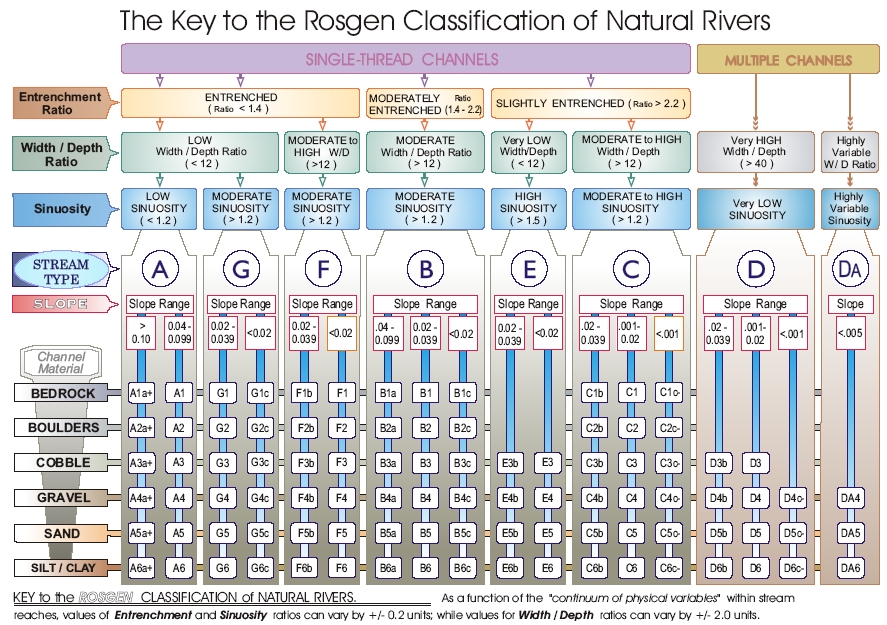
| glossary | menu | Normal | lg | hc | 4.) Geomorphologic Classification Systems > Rosgen Classification Exercise |
| < Previous | 1 | 2 | 3 | 4 | 5 | 6 | 7 | 8 | 9 | 10 | 11 | 12 | 13 | 14 | 15 | 16 | 17 | 18 | 19 | 20 | 21 | 22 | 23 | 24 | 25 | 26 | 27 | 28 | 29 | 30 | 31 | 32 | 33 | 34 | 35 | 36 | 37 | Next > |
Rosgen Classification Exercise

Exercise Objective
To apply Rosgen classification of Reaches and determine Reach type based on fluvial geomorphologic characteristics.
Exercise Process
- Two statements are presented below, each containing qualitative and quantitative descriptions of the system.
- For each statement, use the Rosgen classification chart to characterize the Stream Reach.
- Start with characterizing entrenchment ratio, width to depth ratio, Sinuosity, and slope to determine what letter type.
- Finish with characterizing the channel material to determine the number type.
A single threaded channel has an Entrenchment Ratio greater than 2.2, has a width to depth ratio less than 12, has Sinuosity greater than 1.5, has slopes less than 0.02, and has a sand channel material. What is its likely Rosgen Classification?
A single threaded channel has an Entrenchment Ratio less than 1.4, has a width to depth ratio greater than 12, has Sinuosity greater than 1.2, has slopes less than 0.02, and has a cobble channel material. What is its likely Rosgen Classification?
Image courtesy of Rosgen
| < Previous | 1 | 2 | 3 | 4 | 5 | 6 | 7 | 8 | 9 | 10 | 11 | 12 | 13 | 14 | 15 | 16 | 17 | 18 | 19 | 20 | 21 | 22 | 23 | 24 | 25 | 26 | 27 | 28 | 29 | 30 | 31 | 32 | 33 | 34 | 35 | 36 | 37 | Next > |